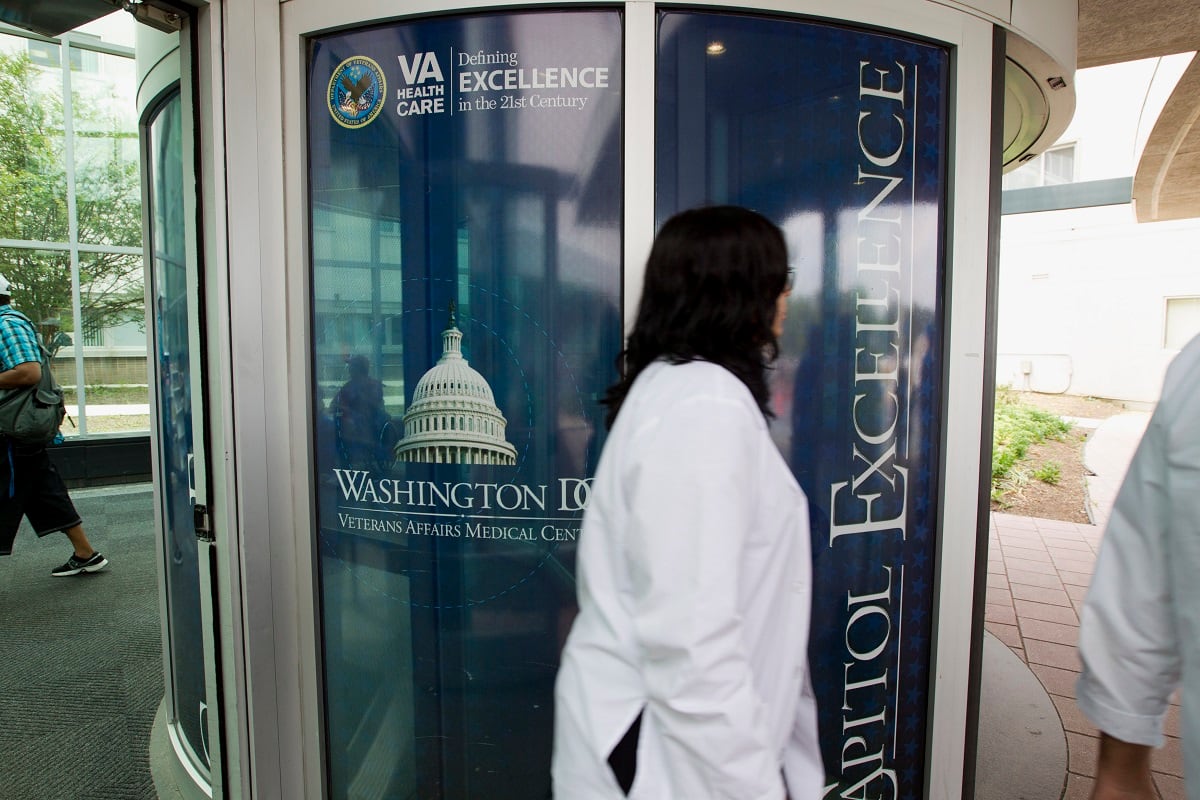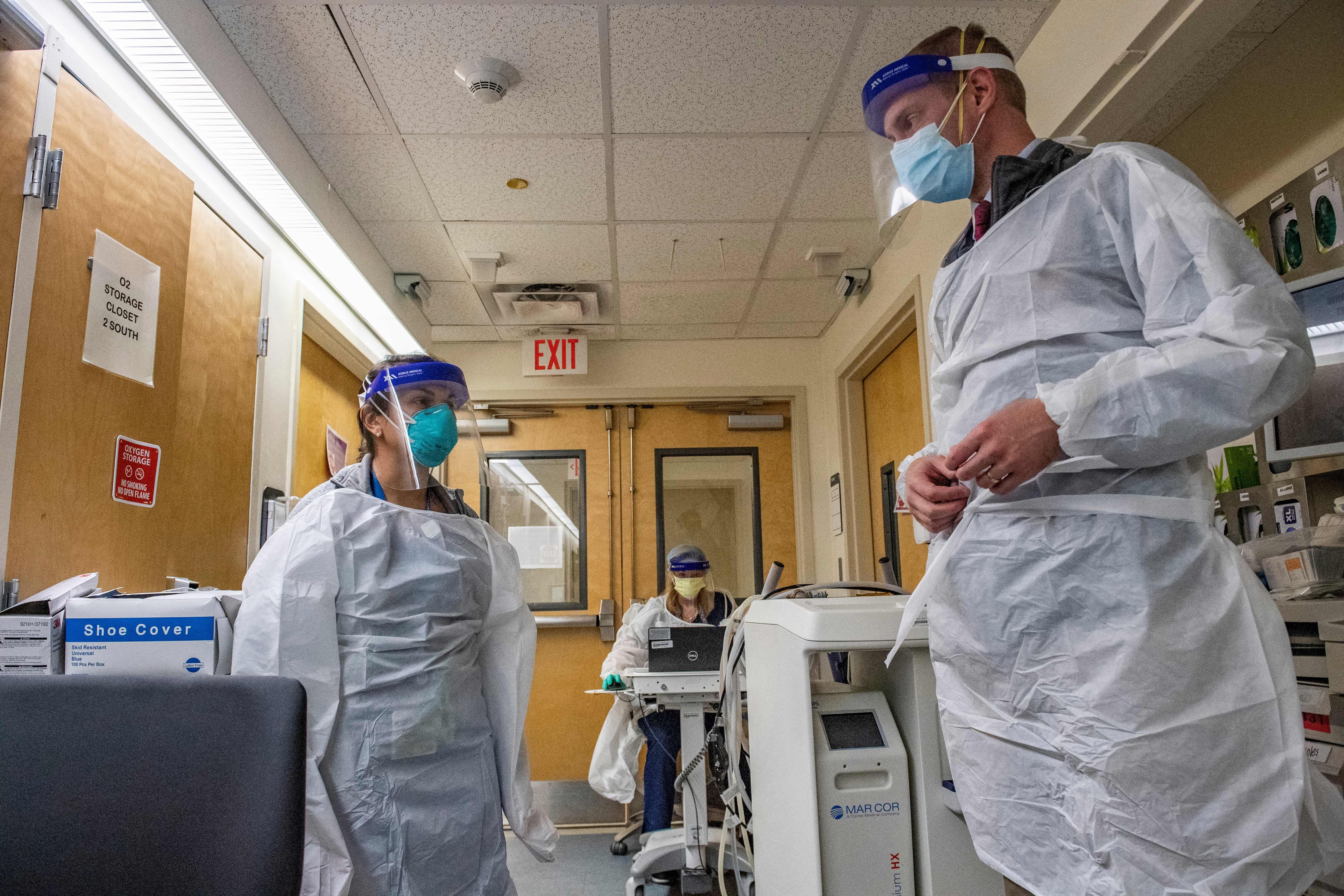U.S. Department of Veterans Affairs leaders say their new employee hiring and staff retention efforts are more successful than ever. Federal union leaders say that’s still not enough to keep up with what the system needs.
On Tuesday, officials with the American Federation of Government Employees released a report to lament “incredible staffing and budget crises across VA facilities,” saying the shortfalls are adding additional work and stress to their membership.
“We spoke to many [VA] employees who really describe pretty stressful conditions, some comparing it to a sweatshop or an assembly line,” said Jasper Craven, interim executive director of the Veterans Healthcare Policy Institute, who worked with the union on the report
Based on surveys of VA employees and AFGE members from early 2022, the report states that department staffing levels remain too low, hurting services available to veterans and morale of employees. The authors blame insufficient funding for the department and too much political focus on shifting veterans care from VA hospitals to private-sector physicians.
The report assertions stand in sharp contrast to the message put forth by VA leaders in recent days, who said they are right now ahead of hiring and retention goals across the medical workforce and the Veterans Benefits Administration.
On Monday, VA Under Secretary for Health Shereef Elnahal said that agency hiring this fiscal year is up 2.5% over last year. That translates into almost 21,000 additional workers through the end of February, lifting the total VA health care workforce to almost 400,000 staffers.
“The bottom line is that we are hiring at a record pace and retaining better than in the immediate previous years, which is great news,” Elnahal told reporters. “And we are instructing my teams across the system to not let up on this momentum.”
Similarly, Aaron Lee, executive director of VBA’s Office of Human Capital Services Executive Director, on Tuesday told reporters that new hiring fairs held in February and early March brought in roughly 1,100 new benefits staffers, putting his agency on pace to meet periodic hiring goals.
“We’re definitely not only meeting our needs, but also the folks that we’re bringing on are the right people to do the work that we have before us,” he said.
VA hiring has been spurred ahead in recent months by money and authorities tied to the Promise to Address Comprehensive Toxics Act (better known as the PACT Act). That legislation, passed last summer, provides new health care and benefits to millions of veterans with military toxic exposure injuries.
Elnahal and Lee said that support — and the mandate to staff up ahead of a surge in workload related to more veterans entering the system — have resulted in the department’s recent hiring surge.
Retention has also risen as the coronavirus pandemic has faded. Elnahal said some of the staff fatigue and stress linked to the increased workload at the height of the pandemic has been fixed by a slow return to normal operations.
But both men acknowledged more needs to be done. The recent benefits staff hires still face about three months of training before they begin processing real cases, and even then will need months of additional mentoring before they are prepared for a full-time workload.
Union officials said that challenge could be mitigated with more flexibility in department hiring rules and more money for salaries, bonuses and site improvements.
They backed a plan from leading veterans organizations to boost VA spending next year by about $20 billion over the White House’s $325 billion budget plan, arguing the department has not received enough money to fulfill its basic responsibilities despite annual appropriations increases over the last two decades.
RELATED

Being able to offer enticing salaries plays into both recruitment and retention goals for the agency, union officials said. Competing with private sector pay is a problem facing all federal agencies who struggle to hire job candidates with advanced degrees and high-demand skills.
“Salaries and signup bonuses are not enough,” said Suzanne Gordon, senior policy analyst at VHPI. “In the post-COVID era, hospitals are trying to recruit any living, breathing healthcare worker who still wants to stay in healthcare. And so it’s very difficult to recruit if you can’t offer competitive market rate salaries.”
The White House proposed a 5.2% pay raise for fiscal 2024 but it remains to be seen whether that number will survive budget negotiations in Congress.
Meanwhile, AFGE and some lawmakers have pushed for an even higher figure of 8.7% to offset inflation and burnout during the pandemic.
In a statement, veterans groups behind that Independent Budget proposal said the AFGE report shows that “VA needs more people, facilities and resources to provide timely, high-quality services to the increasing number of veterans turning to VA for their care.”
Leo covers Congress, Veterans Affairs and the White House for Military Times. He has covered Washington, D.C. since 2004, focusing on military personnel and veterans policies. His work has earned numerous honors, including a 2009 Polk award, a 2010 National Headliner Award, the IAVA Leadership in Journalism award and the VFW News Media award.
Molly Weisner is a staff reporter for Federal Times where she covers labor, policy and contracting pertaining to the government workforce. She made previous stops at USA Today and McClatchy as a digital producer, and worked at The New York Times as a copy editor. Molly majored in journalism at the University of North Carolina at Chapel Hill.





